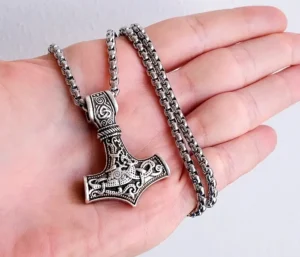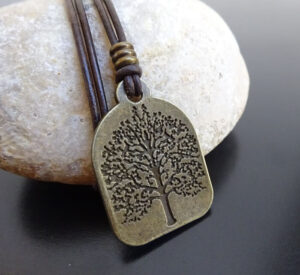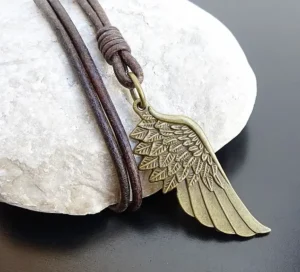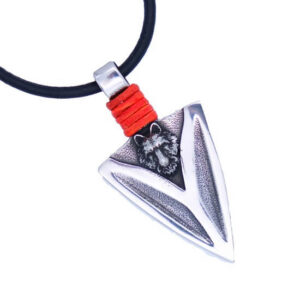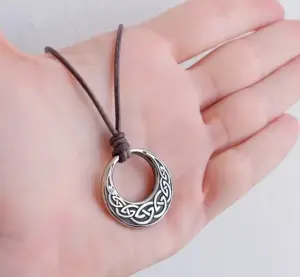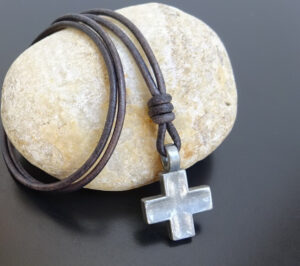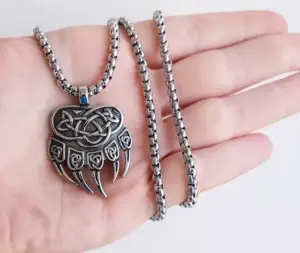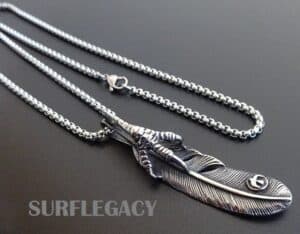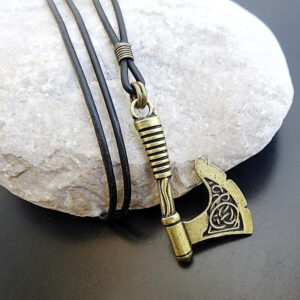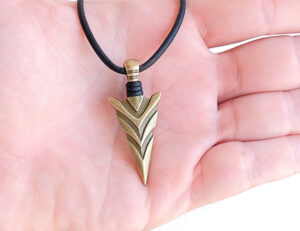In this post, we explore 33 powerful symbols of strength from diverse cultures worldwide, unveiling the profound wisdom they hold.
Strength comes in many forms. Physical strength allows us to accomplish difficult tasks and endure challenges. Mental strength provides resilience against life’s hardships. Spiritual strength gives us hope and courage.
Throughout history, different cultures have used symbolic images to represent values like strength. These symbols remind us of the inner power we possess. They inspire confidence, perseverance and unity.
Understanding the significance behind these images provides insight into shared human experiences that connect us across time and geography.
Key Points:
- Symbols of strength have been used throughout history and across cultures to represent values like courage, resilience and power.
- Many ancient symbols of strength originated from mythological stories and folklore.
- Nature images like trees, animals and flowers often symbolize strength due to their physical properties and survival abilities.
- Protection symbols reinforce the concept of safety during life’s challenges.
- Unity symbols emphasize the strength that comes from people joining together with a shared goal.
33 Symbols of Strength
1 Mjolnir
Thor’s hammer, Mjölnir, is a symbol of great significance in Norse mythology, embodying strength and protection. As the mighty weapon of Thor, the god of thunder, it represents not only physical power but also divine might. It serves as a formidable defense against chaos and destruction, safeguarding the realm of gods, Asgard.
Beyond its combat role, Mjölnir symbolizes cosmic balance and stability, with Thor wielding it to maintain order and protect the realms from turmoil. The hammer’s worthiness enchantment underscores the importance of moral responsibility and humility in wielding strength.
Throughout history, Mjölnir has remained a revered symbol, adorning pendants for protection and serving as an emblem of Nordic heritage and bravery. In modern times, it continues to inspire through various forms of art and popular culture, epitomizing courage and the protection of others.
2 Aegishjalmur
Aegishjalmur, also known as the Helm of Awe or Helm of Terror, is an ancient Norse symbol that embodies strength, protection, and invincibility. This intricate and powerful emblem is believed to have been used by Viking warriors as a talisman of strength and fearlessness in battle.
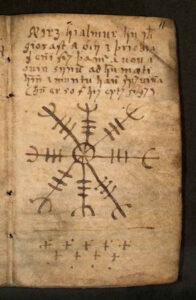
The Aegishjalmur consists of eight spiked arms radiating from a central point, forming an octagonal shape. Its name is derived from “Aegis,” a term associated with divine protection, and “Hjalmur,” meaning “helm” or “helmet.” Thus, the symbol is often interpreted as a protective helm or a magical sign that grants its wearer invincibility and shields them from harm.
Viking legends suggest that wearing or drawing the Helm of Awe on one’s forehead would instill awe and fear in enemies, rendering the wearer indomitable and victorious. It is also believed that the symbol could be used to invoke the protection of the Norse god Odin, enhancing a warrior’s courage and prowess in battle.
Beyond its role in warfare, the Aegishjalmur held broader spiritual significance. It was believed to possess the power to protect against malevolent forces and to create a defensive barrier, ensuring safety and strength in all endeavors.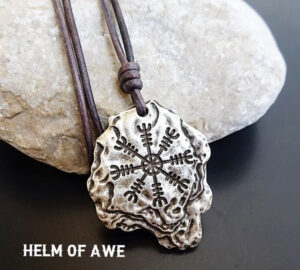
Today, the Aegishjalmur remains a potent symbol of strength and protection in modern Norse-inspired cultures. It is revered as a reminder of the ancient warrior spirit and is embraced by those seeking inner fortitude and resilience in the face of challenges.
3 Tree of Life
The Tree of Life is a universal symbol found in many spiritual traditions. It depicts a tree with spreading branches and deep roots, representing different aspects of creation.
In Celtic culture, the Tree of Life symbolizes strength and wisdom. Its extensive root system expresses the deep foundations of knowledge and power. The branching canopy represents growth, resilience and reaching one’s full potential.
The Tree of Life reminds us of the strength that comes from connection to nature’s cyclic renewal processes. It inspires us to ground ourselves while reaching for the sky.
4 Feathers
Feathers, as a symbol of strength, carry deep spiritual significance and are revered in various cultures and beliefs.
In Native American traditions, feathers are considered sacred and are often used in rituals and ceremonies. They are seen as a connection to the spirit world and a symbol of communication with the divine. Feathers also represent the power of the bird to soar freely through the skies, symbolizing the strength to rise above earthly limitations and gain a higher perspective on life.
Feathers are associated with birds, which are often considered messengers from the spirit realm. Finding a feather is believed to be a sign of guidance, protection, and support from the spiritual realm, reminding us of our inner strength and the presence of unseen forces that watch over us.
In ancient cultures like the Egyptians and the Celts, feathers were used as symbols of strength and power. They were associated with deities and considered protective talismans.
Feathers also symbolize transformation and rebirth, as birds molt and grow new feathers. This process reflects the ability to shed the old and embrace the new, symbolizing the strength to adapt and thrive through change.
Incorporating feathers into personal adornments or sacred rituals serves as a tangible reminder of the strength and connection to the spiritual world, inspiring us to embrace our inner power and face life’s challenges with grace and courage
5 Thunderbolt
The thunderbolt is an ancient symbol seen across many cultures. It represents the powerful and primal energy of lightning.
In Norse mythology, the thunder god Thor wielded a magical hammer called Mjolnir that produced thunderbolts. The hammer returns to Thor after being thrown, mirroring how lightning flashes across the sky.
Lightning is awe-inspiring in its raw power and energy. The thunderbolt reminds us that we too can harness our inner power. It gives the courage and confidence to assert ourselves when life calls us to action.

6 Sphinx
The Sphinx — a mythical creature with a human head and lion’s body — was an important symbol in ancient Egypt. Sphinx statues were believed to guard tombs and temples.
The Sphinx’s calm, noble expression represents patience, wisdom and strength. The lion body symbolizes courage, power and sovereignty.
By combining human intelligence with lion strength, the Sphinx represents the dual nature of humanity. It reminds us to balance thoughtfulness and instinct, intellect and intensity. With self-mastery, we gain resilience and fortitude.
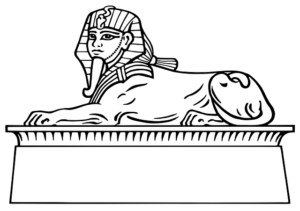
7 Wolf
The wolf has long been a powerful symbol of wildness, loyalty, intelligence and spiritual guidance. Wolves live in tightly knit packs that embody discipline, hierarchy and interdependence.
By learning from the majestic lone wolf and cooperative pack wolf, we understand true freedom through trusting both our inner authority and tribal connections.
Wolf medicine awakens our instincts and teaches us to skillfully rely on inner knowing balanced with community. Mastering both independence and cooperation makes us strong.
8 Bull
The bull represents strength, fertility and confidence across many traditions. As an iconic beast of burden, the bull symbolizes hardy resilience in the face of challenge.
In ancient Greece, bulls were sacrificial animals associated with gods of strength and passion. Killing the bull was an act demonstrating human fortitude over animal force.
The bull reminds us that with self-control and focus, we can steer our strong instincts toward constructive ends. By harnessing our base passions, we transform brute force into courageous commitment.
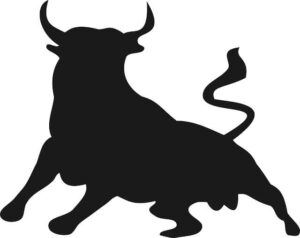
9 Eagle
The eagle is a universal symbol of courage and power. It soars high above the earth with keen vision, dominating the skies with its large wingspan.
As a bird of prey, the eagle possesses speed, precision and deadly hunting instincts. Its elevation above land represents the intellectual height, pride and dominance earned from hard-won mastery and achievement.
The eagle inspires us to evaluate things from a higher vantage point. Once we rise above our challenges, we gain clarity and confidence. We remember our true nature as free spirits with wings.
10 Elephant
The majestic elephant has held a revered place in the hearts and minds of various cultures throughout history. Revered for its sheer strength, the elephant stands as a symbol of power and resilience. Its immense size and unwavering might have often been likened to qualities desired in leaders and individuals alike.
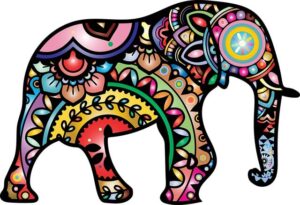
But it is not just physical strength that elevates the elephant to iconic status. Across different societies, elephants are revered for their wisdom and intelligence. Their remarkable memory and problem-solving abilities have earned them a reputation as wise creatures, capable of navigating challenges with astute judgment.
Moreover, elephants’ social structure and strong family bonds have garnered them the label of loyal beings. The deep emotional connections they forge with their herd members, especially the matriarchal leadership, exemplify loyalty and unity, qualities admired by human societies seeking harmony and cooperation.
The cultural significance of elephants as symbols of strength, wisdom, and loyalty can be witnessed in various traditions and art forms. In religious iconography, elephants are associated with deities and revered as sacred creatures, signifying divine qualities of strength and wisdom.
11 Tabono
Tabono is an ancient Adinkra symbol originating from the Akan people of West Africa, particularly Ghana and the Ivory Coast. It represents strength, perseverance, and the power of positive energy in overcoming adversity.
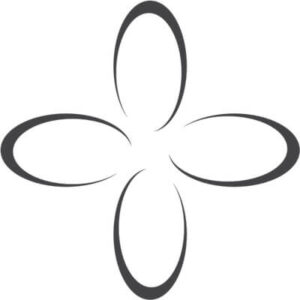
The Tabono symbol is characterized by a unique design resembling a knot or a wooden comb. This design symbolizes the need for diligence and tenacity, much like the wooden comb’s continuous effort in grooming hair. In this context, it encourages individuals to approach their endeavors with determination and a strong work ethic.
As a symbol of strength, Tabono is a reminder of the inner power we all possess. It encourages us to tap into our resilience and unwavering spirit when facing challenges and obstacles in life. Just as the knot in the symbol is difficult to untie, it teaches us that with determination, we can overcome even the most difficult circumstances.
Moreover, Tabono is associated with positive energy and the ability to manifest one’s desires. By focusing on our goals and maintaining a positive mindset, we can attract the energies necessary for achieving success and personal growth.
In Akan culture, Tabono is used in various contexts, including adorning clothing, pottery, and artwork. It is also employed in rituals and ceremonies to invoke strength and perseverance.
12 Celtic Knot
The Celtic Knot, also known as the mystic or endless knot, is a powerful symbol of strength and interconnectedness in Celtic culture.
Characterized by intricate, continuous patterns without a clear beginning or end, the Celtic Knot represents the eternal cycle of life, death, and rebirth. Its design symbolizes the interconnectedness of all things, emphasizing the notion that we are all connected in an intricate web of life.
As a symbol of strength, the Celtic Knot reflects the unbreakable bond between individuals, families, and communities. It reminds us that we are never alone, and our actions ripple through the interconnected threads of existence.
In Celtic spirituality, the knotwork also holds deeper spiritual meanings, symbolizing the interplay of the physical and spiritual realms. It represents the eternal journey of the soul and the cyclical nature of existence.
The Celtic Knot’s enduring appeal lies in its capacity to evoke a sense of continuity, endurance, and unity. It inspires us to embrace the strength that arises from interconnectedness, fostering a sense of belonging and purpose in the grand tapestry of life.
Adorned in art, jewelry, and tattoos, the Celtic Knot serves as a timeless emblem, urging us to recognize the profound strength found in unity, compassion, and the intricate relationships that bind us together in the never-ending dance of existence
13 Anchor
The anchor, an enduring symbol, carries profound meaning as a representation of stability and resilience, predominantly associated with sailors and the maritime world.
In the realm of seafaring, the anchor plays a crucial role in stabilizing a ship and keeping it steadfast amidst the unpredictable currents of the open sea. As sailors navigate through turbulent waters and stormy seas, the anchor becomes an emblem of hope and security, providing a sense of reassurance in times of uncertainty.
Beyond its practical use, the anchor holds symbolic significance in human life as well. It represents the idea of being grounded, anchored to one’s beliefs and values, even in the face of life’s storms. Just as an anchor prevents a ship from drifting aimlessly, it teaches us the importance of staying true to our principles, enabling us to weather life’s challenges with resilience and unwavering strength.
The anchor’s association with sailors also embodies a sense of adventure and exploration. It serves as a symbol of the intrepid spirit that drives humans to venture into the unknown, seeking new horizons and opportunities.
In various cultures, the anchor has been embraced as a talisman, believed to bring luck, protection, and safe journeys. It is not uncommon to find anchors adorning jewelry, clothing, and even incorporated into architectural elements as a reminder of the symbolic virtues it represents.
Furthermore, the anchor serves as a poignant symbol in relationships, signifying steadfastness and support. In this context, it represents the stabilizing force of love and friendship that keeps individuals grounded and secure.
14 Phoenix
The legendary phoenix is a universal symbol of renewal, resilience and fortitude when faced with tremendous adversity. This mystical firebird dies in a show of flames only to rise again from the ashes, renewed and reborn.
The phoenix represents the indestructibility of the fiery human spirit. Although wounded, betrayed or downtrodden, our inner strength and resolve can resurrect us from the ashes of life’s defeats.
The phoenix encourages us to acknowledge and integrate our wounds as an essential part of renewal. Hope lifts us up so that we may soar even higher.
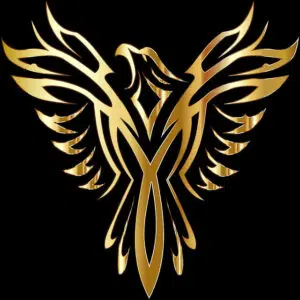
15 Griffin
The griffin, a mythical creature with the body of a lion and the head of an eagle, embodies strength and power in various cultures and folklore.
This majestic chimera symbolizes a formidable combination of the king of beasts and the king of birds, representing both earthly and aerial prowess. As the lion signifies courage and ferocity, and the eagle symbolizes vision and supremacy, the griffin becomes a potent emblem of strength, fearlessness, and dominion.
Throughout history, the griffin has been revered as a guardian of treasures and a protector against evil, showcasing its role as a symbol of defense and security. Its majestic presence continues to inspire awe and respect, resonating as a timeless icon of strength and might.
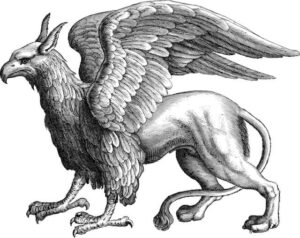
16 Lotus Flower
The lotus flower, despite its humble beginnings in murky waters, emerges gracefully and pure above the surface, becoming a powerful symbol of strength and resilience.
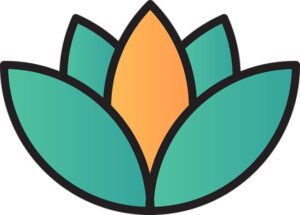
In various cultures, the lotus embodies profound spiritual and philosophical significance. Its ability to rise above adversity mirrors the human spirit’s capacity to overcome challenges and hardships. Just as the lotus thrives in adverse conditions, it reminds us of the strength that lies within ourselves to bloom amidst difficult circumstances. The unfolding petals of the lotus signify the journey of personal growth and enlightenment.
Additionally, its ability to close at night and reopen with the morning sun represents renewal and the cycle of life. Thus, the lotus flower stands as a timeless emblem of strength, reminding us that even in the darkest moments, we possess the potential to rise and flourish.
17 Hamsa Hand
The Hamsa Hand, a revered symbol in various cultures and religions, embodies powerful attributes of protection and strength. Also known as the Hand of Fatima or Hand of Miriam, it is a hand-shaped amulet with an open palm and an eye in the center. This eye, known as the “Evil Eye,” is believed to ward off negative energies and protect against malevolent forces.
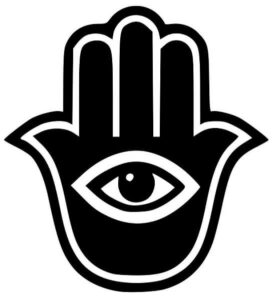
The Hamsa Hand’s cultural significance spans across Jewish, Islamic, and Middle Eastern traditions, uniting people in its universal appeal. It serves as a powerful talisman, offering defense against evil intentions and providing a shield of strength to its wearer.
As a symbol of protection, the Hamsa Hand represents the interplay between the spiritual and physical realms, invoking divine blessings and safeguarding from harm. It is a potent reminder of the power of faith and the inherent strength that comes from belief in something greater.
With its roots deeply embedded in history, the Hamsa Hand continues to be cherished in modern times as a symbol of hope, resilience, and protection. Its enduring presence exemplifies the universal longing for safety and strength, transcending borders and unifying diverse cultures under the banner of a shared protective emblem.
18 Uruz Rune
Uruz is an ancient runic symbol from the Elder Futhark, the oldest runic alphabet used by Germanic tribes. Uruz is associated with the ancient proto-Germanic word “ūruz,” which means “aurochs,” a powerful and wild ox that once roamed Europe.
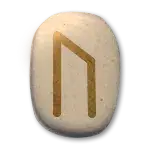
As a runic symbol, Uruz embodies strength, vitality, and primal energy. The aurochs was considered a formidable and untamed creature, representing the untapped potential and raw power that lies within each individual. Uruz is a reminder of the inherent strength we possess and the need to tap into our inner resources to overcome challenges.
This runic symbol is also linked to physical health, endurance, and stamina. Uruz encourages us to embrace our primal instincts and take charge of our physical well-being, nurturing a strong and resilient body.
Moreover, Uruz is a symbol of personal growth and transformation. Just as the aurochs symbolizes untamed energy, this rune signifies the courage to face life’s changes, adapt, and evolve. It empowers us to navigate life’s journey with vigor, vitality, and determination.
In divination, Uruz is associated with positive outcomes, indicating a time of strength and personal empowerment. It advises us to seize opportunities and embrace our inner power to achieve our goals.
As a potent emblem of strength and vitality, Uruz remains an enduring and revered runic symbol, inspiring individuals to tap into their innate power and embark on a path of growth and self-discovery.
19 Tiger
The tiger, with its majestic presence and awe-inspiring prowess, stands as a symbol of strength, courage, and ferocity in various cultures and beliefs.
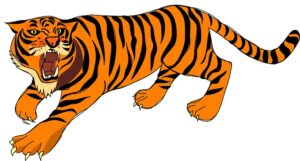
As one of the most powerful apex predators, the tiger epitomizes physical strength. Its muscular build, sharp claws, and mighty jaws underscore its ability to overpower and conquer its prey, making it an emblem of unmatched physical might.
In addition to its physical strength, the tiger represents courage and fearlessness. As a solitary hunter, it faces the challenges of the wild with unwavering bravery, embodying the spirit of courage needed to confront life’s obstacles head-on.
Ferocity is another defining characteristic of the tiger. When defending its territory or protecting its young, the tiger reveals a relentless and determined nature, fiercely defending what is dear to it. This attribute symbolizes the tenacity and unyielding spirit necessary to face life’s trials and emerge victorious.
The tiger’s symbolism extends beyond the animal kingdom, permeating human cultures. In various Asian traditions, the tiger holds a significant place, often revered as a guardian deity and a symbol of power and protection.
Furthermore, the tiger has inspired numerous mythologies, legends, and works of art, with its image gracing ancient temples and modern artwork alike. It continues to be an iconic representation of strength and courage, reminding us of the indomitable spirit that resides within all of us.
20 Cross
The cross, a universal symbol with deep cultural and religious significance, embodies strength in various contexts.
In Christianity, the cross represents the ultimate act of sacrifice and strength through the crucifixion of Jesus Christ. It is a symbol of love, redemption, and forgiveness, reflecting the belief that strength lies not only in physical might but in the power of compassion and selflessness.
Beyond its Christian associations, the cross has been used as a symbol of protection and strength in different cultures throughout history. In ancient times, the cross was a sacred symbol in many pagan traditions, representing the balance of four elements (earth, air, fire, and water) and the harmonious union of opposites.
In the modern world, the cross is often associated with the strength to endure adversity and find hope in challenging times. It serves as a reminder of resilience and the capacity to overcome life’s obstacles with faith and perseverance.
Moreover, the cross has become a powerful emblem of unity and solidarity, transcending religious and cultural boundaries. It symbolizes the interconnectedness of humanity and the shared values of compassion, hope, and courage.
As a symbol of strength, the cross carries a profound message of endurance, compassion, and the power to find light in the darkest of circumstances. Its enduring presence in diverse cultures underscores its universal appeal as an emblem that inspires and uplifts individuals to find strength within themselves and in their connections with others.
21 Oak Tree
Oak trees have symbolized strength and endurance throughout history. Their root systems grow to mirror their vast height, anchoring them firmly in the earth. Oak trunks and wood are very dense and difficult to break.

The oak’s solidity and longevity represent the unwavering spirit that weathers all storms. Its roots connect to primal life energies while supporting its reaching branches.
When we grow from strong foundations, we develop resilience. Oak energy gives us the power to flourish through difficulty and stand tall for what we believe in.
22 Bear Paw
The bear paw is a potent symbol of strength and resilience, revered in various cultures and spiritual beliefs.
In Native American traditions, the bear is a sacred animal, embodying power, protection, and healing. The bear paw is a representation of the bear’s strength and courage, signifying the ability to face challenges and defend oneself and loved ones.
The bear’s pawprint symbolizes a connection to nature and the wilderness, encouraging individuals to tap into their primal instincts and innate inner strength. Just as a bear’s paw leaves a mark on its path, the bear paw symbol reminds us that our actions have consequences, and our strength can make an impact on the world around us.
Beyond its physical strength, the bear is also associated with nurturing and motherly qualities. The bear’s protective nature and care for its cubs highlight the importance of family bonds and the strength derived from love and unity.
As a symbol of strength, the bear paw urges us to embrace our own power and face life’s challenges with courage and determination. It inspires us to connect with our instincts, trust our inner guidance, and draw upon the inherent resilience within us to overcome obstacles and thrive in the face of adversity.
23 Lion
The lion, often referred to as the “king of the jungle,” is an emblem of strength, courage, and majesty.
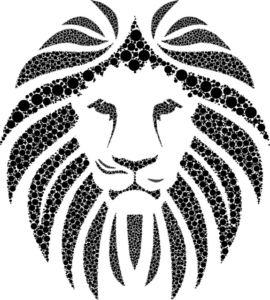
As a symbol of strength, the lion’s imposing physique and powerful roar command respect and admiration. Its muscular build and sharp claws make it a formidable predator, embodying physical might and dominance.
Courage is another defining characteristic of the lion. As a fearless hunter, the lion fearlessly faces its prey and protects its territory, showcasing bravery in the face of challenges.
Majesty is inherent in the lion’s regal demeanor. Its proud and dignified presence has inspired awe and reverence in cultures across the world, symbolizing nobility and leadership.
In various mythologies and religious texts, the lion is often associated with virtues like courage, leadership, and protection. In some traditions, it serves as a symbol of divine power and strength.
The lion’s symbolism has been embraced in heraldry, national emblems, and cultural representations. It continues to be an enduring symbol of strength and pride, reminding us of the awe-inspiring qualities of these magnificent creatures and inspiring us to embody their virtues in our own lives.
24 Triskelion
The Triskele, a Celtic symbol, holds profound significance, representing personal growth, strength, and progress. Its unique design features three interconnected spirals, symbolizing the eternal cycle of life, death, and rebirth. This Celtic emblem embodies the constant evolution and transformative nature of existence.
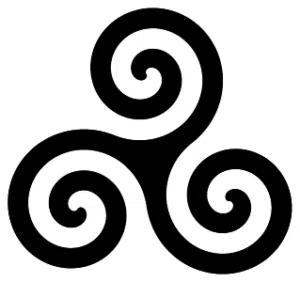
The Triskele’s representation of personal growth lies in its dynamic spirals, reflecting the journey of self-discovery and development. It encourages individuals to embrace change, learn from experiences, and evolve into their best selves.
Moreover, the Triskele symbolizes strength, as the spirals exhibit resilience and continuity. It serves as a reminder of the inner fortitude that enables us to overcome obstacles and endure life’s challenges.
As a symbol of progress, the Triskele inspires forward movement and the pursuit of higher aspirations. It encourages individuals to embrace change as an opportunity for positive advancement.
Throughout Celtic history, the Triskele has been celebrated as a powerful emblem, resonating with the human spirit’s aspirations for personal growth, strength, and progress. Its timeless appeal endows it with universal meaning, inspiring individuals to embark on a path of transformation and self-improvement.
25 Ailm
Ailm, a symbol in Celtic Ogham, represents strength, healing, and protection. This ancient symbol takes the form of a straight line with one or more shorter lines branching off diagonally. It symbolizes the resilience and endurance found in trees, as they stand tall and withstand the test of time.
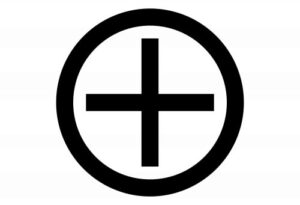
Ailm’s association with healing and protection underscores the importance of physical and spiritual well-being. The Celts admired the qualities of trees and believed that connecting with nature brought them strength and vitality. As a potent emblem of strength and protection, Ailm serves as a reminder of the enduring power found in nature and the inherent strength that connects us to the natural world.
26 Wild Boar
The boar, an ancient symbol celebrated in various cultures, epitomizes strength and power. With its muscular build, sharp tusks, and fierce demeanor, the boar embodies physical might and tenacity.
In Celtic mythology, the boar was highly revered, representing courage, protection, and warrior-like attributes. Tales of heroic boars, such as the legendary boar Twrch Trwyth in the Arthurian legends, showcase the creature’s formidable strength and ferocity in battle.
Moreover, the boar’s symbolism extends beyond its physical prowess. In some cultures, the boar is considered a symbol of fertility and abundance, associating its strength with the bountiful harvest and prosperous times.
The boar’s significance also carries spiritual connotations. In some ancient traditions, it served as a totem animal, representing qualities like fearlessness, determination, and survival instincts.
Throughout history, the boar’s depiction in art, myths, and heraldry has preserved its enduring allure as a symbol of strength and power. As a creature of great resilience and indomitable spirit, the boar remains a timeless emblem, inspiring individuals to harness their inner strength and face life’s challenges with courage and fortitude.
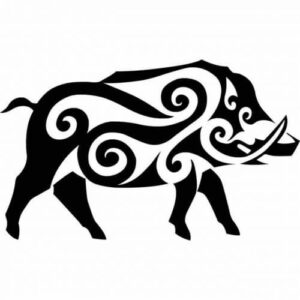
27 Gladiator
The gladiator, an iconic figure from ancient Roman culture, symbolizes physical strength, bravery, and resilience in the face of adversity.
As skilled fighters, gladiators were celebrated for their exceptional physical prowess and combat abilities. They underwent rigorous training to develop their strength and endurance, showcasing their mastery in the arena before a captivated audience.
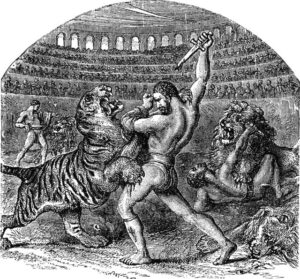
Bravery was a defining characteristic of the gladiator, as they willingly faced dangerous opponents and perilous situations. Their fearlessness and willingness to confront mortal danger made them a symbol of courage and valor.
The life of a gladiator was filled with challenges and hardships, yet they displayed remarkable resilience and determination. They endured the harsh conditions of the arena, often facing insurmountable odds, yet continued to fight with unwavering spirit.
The gladiator’s portrayal in art, literature, and film has perpetuated their image as enduring symbols of physical strength, bravery, and resilience. They exemplify the human spirit’s capacity to rise above adversity, inspiring us to face life’s challenges with fortitude and courage.
28 Eagle Talons
Eagle talons, the sharp and powerful claws of these majestic birds of prey, symbolize strength, precision, and predatory prowess.
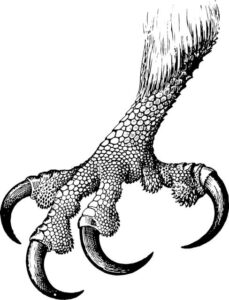
The eagle’s talons are marvels of nature, designed for capturing and holding onto their prey securely. Their remarkable strength allows them to carry prey much larger than themselves, showcasing their ability to conquer formidable challenges.
As symbols, eagle talons represent courage and fearlessness, as eagles fearlessly hunt and defend their territories, displaying their unwavering determination in the pursuit of their goals.
In various cultures, eagle talons have been revered as protective amulets and symbols of strength and power. They are believed to bestow the wearer with the attributes of the eagle, instilling them with courage, keen sight, and the ability to seize opportunities.
Eagle talons serve as a reminder of the resilience and adaptability found in nature, encouraging us to harness our inner strength, sharpen our focus, and face life’s trials with determination and precision, just as the eagle uses its talons to seize its prey and conquer the skies.
29 Pempamsie
Pempamsie is an Adinkra symbol from the Akan people of West Africa, particularly Ghana. It represents strength, steadfastness, and the importance of being resolute in one’s actions and decisions.
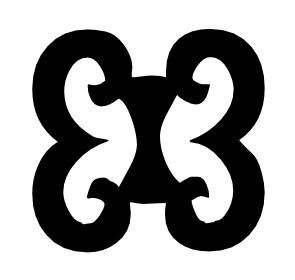
The Pempamsie symbol is characterized by a design featuring a cross-like shape with a small circle at the intersection. The four arms of the cross symbolize the strong foundation or “pam” upon which one can stand with confidence and determination.
As a symbol of strength, Pempamsie emphasizes the need for inner fortitude and resilience in the face of challenges. It serves as a reminder to remain steadfast in one’s convictions and to withstand external pressures that may try to sway or deter one from their chosen path.
In Akan culture, Pempamsie is often associated with unity and the collective strength that arises when individuals come together for a common purpose. It highlights the importance of standing united to overcome obstacles and achieve shared goals.
Enclosing circles signify wholeness and protection. Each individual link has limited strength, but joined together, the chain is very hard to break. Unity creates power.
Pempamsie reminds us that when we come together, we form an unbreakable bond. Combined with others moving in unison, our synchronized strength can accomplish incredible things.
30 Nkonsonkonson
Nkonsonkonson, an Adinkra symbol from the Akan people of West Africa, represents unity and the strength that arises from togetherness.
The Nkonsonkonson symbol features a series of interconnected links, forming a chain-like design. Each link is a representation of individuals and their unique contributions, emphasizing the significance of communal support and collaboration.
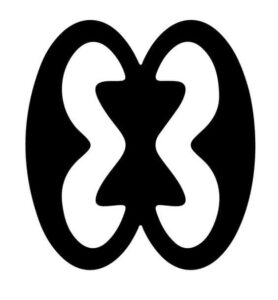
As a symbol of strength, Nkonsonkonson underscores the power that emerges from unity and cooperation. It reminds us that we are all connected and that our collective actions have a profound impact on our communities and society as a whole.
In Akan culture, Nkonsonkonson serves as a reminder of the value of harmonious relationships and the importance of standing together in times of challenge and celebration. It represents the enduring bonds that connect individuals in families, tribes, and broader social circles.
Beyond its cultural origins, Nkonsonkonson carries universal meaning, inspiring us to cherish our connections with others and recognize the strength that arises from supporting and uplifting one another. It encourages us to embrace collaboration, compassion, and the power of unity to overcome adversity and build a stronger, more interconnected world.
31 Viking Axe
The Viking axe, an emblem of strength and valor in Norse mythology, held profound significance in the lives of these seafaring warriors. Beyond being a formidable weapon of war, the axe served as a versatile tool for daily tasks, underscoring the Vikings’ resourcefulness and resilience.
As a symbol of strength, the Viking axe represented the prowess and fearlessness of these fierce warriors. Its use in battle showcased their indomitable spirit and determination to defend their homes and loved ones from threats.
In times of peace, the Viking axe continued to embody the Vikings’ connection to their roots and the practicality needed for survival. It was utilized for crafting, woodworking, and hunting, reflecting their ability to adapt to various challenges.
The Viking axe’s enduring presence in Norse mythology and culture cements its legacy as a symbol of unwavering strength and protective instinct. It serves as a reminder of the indelible mark left by these formidable warriors and inspires us to tap into our inner fortitude to safeguard what we hold dear.
32 Katana
The katana, a traditional Japanese sword, is a symbol of strength, skill, and honor in Japanese culture and history.
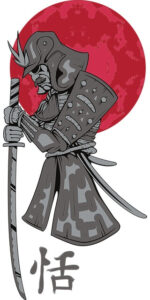
As a symbol of strength, the katana represents the mastery of its wielder in the art of swordsmanship. Crafted with exceptional precision and folded layers of steel, the katana’s sharp blade embodies the power to cut through obstacles and adversaries with remarkable efficiency.
The katana’s strength lies not only in its physical attributes but also in the spiritual discipline of its samurai practitioners. It is considered a sacred and honorable weapon, and the way of the katana reflects the code of conduct known as Bushido, emphasizing courage, loyalty, and the pursuit of justice.
Beyond its practical use in battle, the katana has become an iconic representation of Japan’s rich cultural heritage. It embodies the elegance and grace of Japanese craftsmanship, symbolizing the country’s dedication to perfection and tradition.
As a symbol of strength, the katana serves as a reminder of the indomitable spirit of the samurai and their unwavering dedication to protecting their loved ones and upholding their principles. It continues to inspire admiration and reverence worldwide, reflecting the enduring power of a symbol that embodies physical prowess, spiritual discipline, and an unyielding commitment to honor and duty
33 Arrowhead
The arrowhead, an ancient symbol with rich historical and cultural significance, represents strength and resilience.
As the sharp and decisive tip of an arrow, the arrowhead symbolizes focused direction and purpose. In this context, it serves as a reminder to stay determined and resolute in pursuing our goals, much like an arrow cutting through the air to hit its target.
The arrowhead also embodies physical strength and power. In ancient times, it was used as a lethal weapon for hunting and warfare, showcasing the potency and force behind its design.
Beyond its practical applications, the arrowhead holds symbolic value in various indigenous cultures. It is often associated with protection, courage, and the warrior spirit, serving as a talisman to ward off negative energies and promote bravery.
In Native American traditions, the arrowhead represents a connection to nature and the strength derived from living in harmony with the land. It symbolizes the interplay of the physical and spiritual realms, urging individuals to draw strength from both.
As a symbol of strength, the arrowhead inspires us to remain steadfast in our pursuits, embrace our inner power, and strike with purpose and determination, propelling us forward on our life’s journey with unwavering strength and resolve.
See also:
Strength Runes: An In-depth Exploration
35 Inspiring Symbols of Growth: Unleash Your Inner Potential
Ancient Protection Symbols from Around the World
32 Symbols of Rebirth: Inspiring Signs of Change and Growth
30 Powerful Symbols of Resilience from Across the Globe: Norse, Celtic, and Beyond



